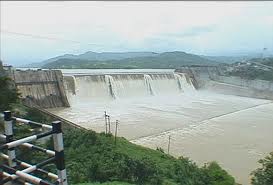 This report has been prepared by the members of the working group set up by the Forum for Policy Dialogue on Water Conflicts in India on the issue of “Entitlements and allocations for livelihoods and ecosystem needs". The introductory chapter sets out the context of the report. The immediate context is the work of the Forum over the last 4-5 years, and the learning that this particular issue leads to many water conflicts in India.
This report has been prepared by the members of the working group set up by the Forum for Policy Dialogue on Water Conflicts in India on the issue of “Entitlements and allocations for livelihoods and ecosystem needs". The introductory chapter sets out the context of the report. The immediate context is the work of the Forum over the last 4-5 years, and the learning that this particular issue leads to many water conflicts in India.
The broader context is the water sector 'crisis', and problems such as declining water availability and unsustainable and inequitable use of water, along with ongoing changes that are taking place in the water sector. These changes include, among other things, institutional changes (such as the setting up of regulatory authorities), the introduction of water entitlements and tradable rights, an emphasis on the pricing of water, and a continuing clamour for large-scale infrastructure projects. The kind of implications that these changes would have for different aspects of a right to water are then briefly indicated.
The rest of the report discusses in greater detail each of the four sets of needs - basic, livelihood, environmental, and socio-cultural - that should, ideally, be part of any conceptualisation of a right to water. The effort in each case is towards bringing out the complexities involved, rather than coming up with a single, 'technical' definition of the need in question, or suggesting a one size fits all solution.
Chapter 2 talks about the right to water for basic needs in terms of different dimensions such as quantity, quality, affordability, accessibility, the unit at which provision is made and also the conditions for such provision, institutional mechanisms for delivery, and pricing. In terms of the controversial questions of delivery and pricing, it is argued that whatever be the mode of delivery, certain non-negotiables must be clearly laid down, even if these preclude many kinds of private sector participation. Care must also be taken to avoid using the instrument of pricing to meet goals that it is not best suited to meet. A tentative model of provision of water for basic needs is then outlined.
Chapter 3 discusses the importance of taking ecosystem needs into account in the planning for development and management of water resources, pointing out how inter-basin diversion, indiscriminate sand mining, and other interventions adversely affect ecosystems. However, interpreting environmental flows or ecosystem needs is not easy, especially given the fact that it is not only the amount, but also the timing, quantity, quality, and duration of flows that are important from an ecosystem perspective. Nor is it obvious that 'apportioning' or 'allowing' water to be left in the ecosystem is the correct approach; in addition, there is a view that environmental water requirements should include both terrestrial and aquatic ecosystems. Hence, methodologies appropriate to the Indian context need to be carefully chosen.
Chapter 4 brings out some key questions related to water for livelihood needs and explores areas where there could be convergence across different uses. The importance of thinking of livelihoods not just in terms of food security or meeting of basic needs, but in terms of a life with dignity for the family is stressed. However, determining the basic requirements of a person/family to ensure a reasonable living and a life with dignity, as well as the level of various livelihoods that would ensure that these requirements are met, is not an easy task. Certain guiding principles are then offered in the case of both agricultural and non-agricultural occupations.
Chapter 5 briefly discusses the right to water for socio-cultural needs. Broadly, these can be defined as water required to maintain a certain way of life that is inclusive of the cultural traditions, social values, and practices of particular communities. Recognizing socio-cultural needs as a separate category is important because they draw attention to the multi-faceted nature of water; play a role in the preservation of cultural identity; and often involve knowledge systems with very different kinds of epistemological bases than that of the dominant development paradigms. Although socio-cultural needs are difficult to quantify, some general principles could be laid down.
Chapter 6, the concluding chapter, drawing from the previous chapters brings out the critical issues that cut across all the different uses. The issues this chapter discusses include prioritization of different water uses, right to water and equity, mode of service delivery, water pricing, environmental flows and water for industries.
The report argues for a framework law which sets out the principles that are binding on both the policy and legal processes. Such a framework law needs to take into account: 1) the biophysical and social characteristics of water, 2) a right based discourse (the right to water should include on the minimum a) potable water of adequate quantity for all, water for livelihoods, minimum environmental flows, and b) only after meeting these needs can water be made available for commercial use), 3) the legal framework must take as its starting point an articulated hierarchy of these rights; and 4) an institutional mechanism to ground it.
Image courtesy: www.waterwarsmedia.wordpress.com
Download the report below -
/articles/life-livelihoods-ecosystems-culture-entitlements-and-allocation-water-competing-uses